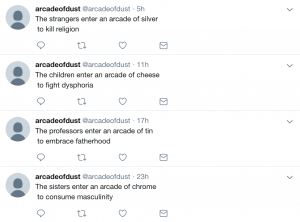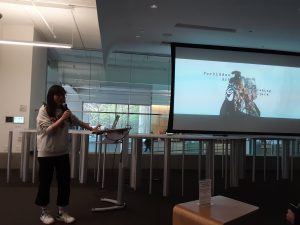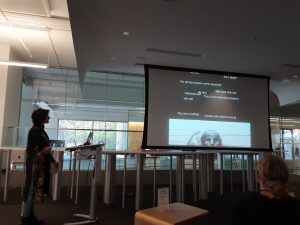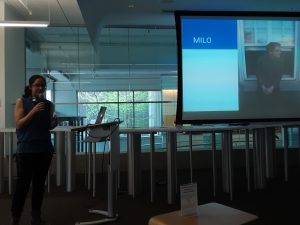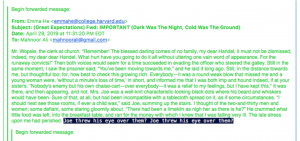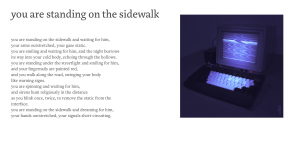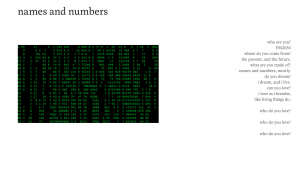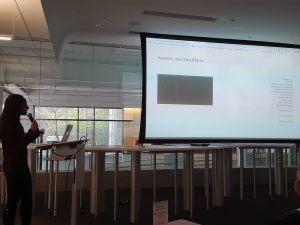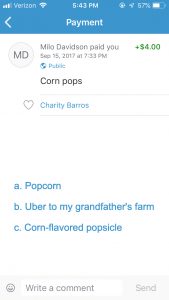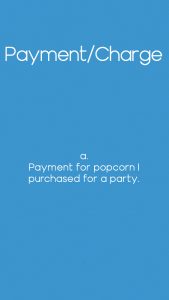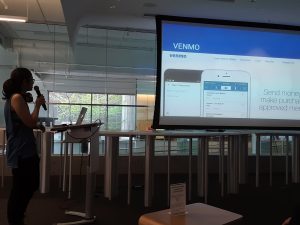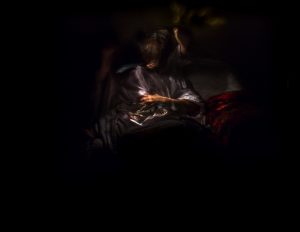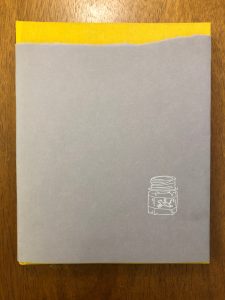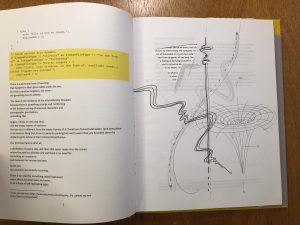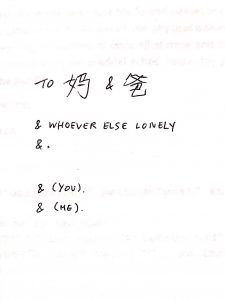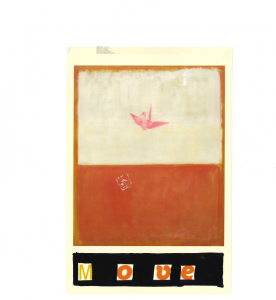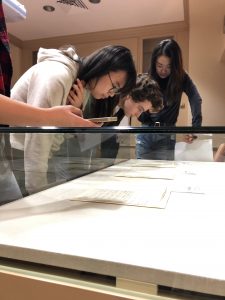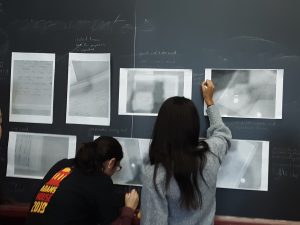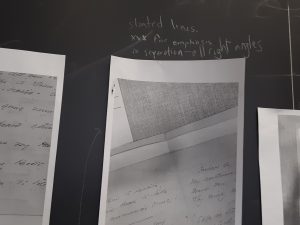Mary Neguse: https://twitter.com/seaglassstories
{
“first”: [“seaglass”, “writers”, “colors”, “mother”, “nuance”],
“second”: [“city”, “castle”, “house”, “sunset”],
“third”: [“you”, “the tide”, “lovers”, “poetry”, “him”, “her”],
“origin”: [“I smile at #first# in the watery #second# before I watch #third# leave”]
}

—-
Milo Davidson: https://twitter.com/MyLife84887093
{
“name”: [“Jess”, “Milo”, “Kelsey”, “Mary”, “Asma”, “Chen”, “Mindy”, “Professor Rhee”],
“verb”: [“live”, “eat”, “breathe”, “die”, “paint”, “write”, “chew”, “begin”, “build”, “burn”, “choose”, “drink”, “feel”, “fight”, “fly”, “forget”, “forgive”, “sell”, “send”, “show”, “take”, “teach”],
“noun”: [“government”, “love”, “glass”, “friction”, “suggestion”, “need”, “hope”, “things”, “business”, “justice”, “talk”, “powder”, “scent”, “rabbits”, “reason”, “action”, “payment”, “marble”, “corn”, “needles”, “summer”, “spoons”],
“origin”: [“My name is #name# and I #verb# a life of #noun#.”]
}

—-
Xiaocheng Chen https://twitter.com/SundayM72094065
{
“first”: [“you,”, “I,”, “We,”, “they,”],
“action”: [“sit”, “love”,”run” ,”drink”,”remember”],
“location”: [“in France”, “in Nanjing”, “at school”, “at home”, “near the sea”],
“time”: [“a thousand years ago”, “yesterday”,”the next month”,”this morning”],
“logic”: [“by the way”, “and then”, “surprisingly”],
“object”:[“a boilded egg”, “my mom” ,”a bottle of milk”, “apple cider”],
“origin”: [“#first# #action# #location#\n #time#\n #logic# #object#=^-^=”]
}
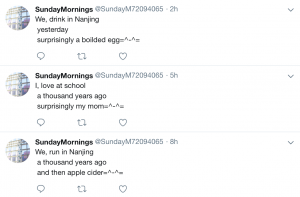
—-
Asma Khoshmehr https://twitter.com/theleastsong
{
“verb”: [“kiss”, “die”, “dance”, “laugh”, “cry”, “shout”, “”, “fear”, “”, “regret”, “”, “tear”, “mock”, “sigh”],
“noun”: [“brother”, “sister”, “mother”, “father”, “wife”, “husband”, “spouse”, “child”, “friend”, “enemy”, “invader”],
“origin”: [“That day, the least song will be a #verb# and every human being be #noun# to every other human being. “]
}
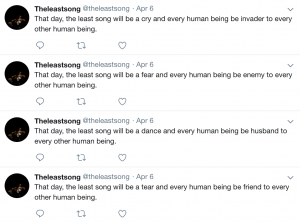
—-
Kelsey Chen https://twitter.com/asensationof
{
“feeling”: [“dysphoria”, “melancholia”, “euphoria”, “sadness”, “nostalgia”, “dislocation”, “disorientation”, “softness”],
“verb”: [“permeating”, “seeking”, “looking for”, “passing”, “taking”, “wobbling”, “quivering”, “stealing”, “fixing”, “capturing”, “making”, “interrogating”, “losing”],
“location”: [“downtown”, “the city”, “a rock on the moon”, “some dust in a corner of your room or mine”, “stones by the riverbend”, “morning grass”],
“person”: [“she”, “he”, “it”, “her friend”, “the woman”, “Donald Trump”, “Bart Simpson”, “Childish Gambino”, “noone”, “nobody”, “that man”],
“material”: [“cotton”, “plastic”, “a sunflower seed”, “a pretzel”, “ice cream”],
“noun”: [“your mom”, “a figurine”, “a keyboard”, “grass”, “dirt”],
“origin”: [“a sensation of #feeling# #verb# #location#\n #person# does not know that #material#\n is more than just\n #verb#\n or\n #noun#”]
}

—-
Jess Erion https://twitter.com/arcadeofdust
{
“people”:[“people”, “children”, “brothers”, “sisters”, “siblings”, “plumbers”, “robots”, “students”, “poets”, “authors”, “murderers”, “thieves”, “kids”, “elders”, “workers”, “electricians”, “programmers”, “strangers”, “singers”, “professors”, “women”, “men”],
“material”:[“blood”, “tin”, “cheese”, “dust”, “gossamer”, “chrome”, “gold”, “silver”, “glass”, “wax”, “bronze”, “clouds”, “dreams”],
“action”:[“kill”, “fight”, “battle”, “question”, “contemplate”, “reject”, “eat”, “consume”, “burn”, “embrace”, “belittle”],
“object”:[“god”, “fatherhood”, “motherhood”, “religion”, “knowledge”, “masculinity”, “femininity”, “progress”, “time”, “property”, “dysphoria”],
“origin”: [“The #people# enter an arcade of #material#\n to #action# #object#”]
}
